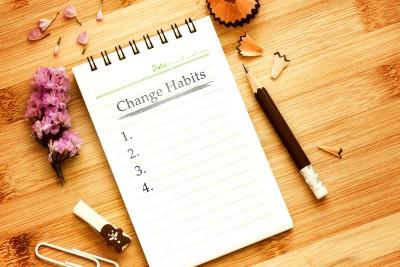Habits can be difficult to form and change. We all have bad habits that we wish we could get rid of and hope to replace with better habits. Once you’ve developed a good habit, you feel in the groove and naturally things happen to help support the habit. Understanding how a habit is formed can be key to kicking one to the curb or developing a new helpful one. In The Power of Habit, Charles Duhigg explains the habit loop and strategies to manipulate the loop to change your current habits and encourage a new behavior.
Habit Loop
A habit is essentially a neurological pattern that puts you in “autopilot.” It’s your brain’s way of saving energy and effort by allowing your mind to ramp down. Habit formation occurs through a loop that includes a cue, routine, and reward. A cue is a trigger that signals the brain to use the habit and go into automatic mode. For example, this could be the act of putting on your running shoes for an evening jog. A routine can be mental, emotional, or physical. In the case of an evening jog, the routine would be running outside after work every day. Finally, a reward helps the brain remember and reinforce the habit. A sense of accomplishment and endorphins can encourage a person to stay motivated to continue their evening jogs. The primary goal of habit formation is to intertwine the cue and rewards to eventually elicit a craving for the desired behavior. This is the power behind habits; they become automatic and the brain begins to crave the reward. All habits follow this loop; however, your brain doesn’t necessarily differentiate between a good habit or bad habit. Thus, bad habits can be difficult to break since they follow the same cycle as good habits.

Habit Change
While bad habits are difficult to break, we can replace addictive habits with new ones. The key to changing a habit is to keep the initial cue, replace the routine, and keep the reward. First, identify the routine and behavior you want to change. Next, isolate the cue. What is your location, time, emotional state, and surrounding? Note who is also around during the cue immediately preceding the action. Habits can be difficult to quite because there are often multiple cues but try to have a plan such as an if/then strategy: If I feel the urge to (x), then I will do (y). After identifying your cues, experiment with rewards. Rewards are powerful because they satisfy your cravings, so it’s important to test different hypotheses to determine which craving is driving your routine and take advantage of patterns that already exist.
As a final note, willpower and belief are crucial to creating habit. Mindfulness-based skills can also be beneficial, so try tapping into your habit loops to create better habits that support your life goals!





This information was so interesting! I really enjoyed this ! Thank you so very much 🙏🙏.
Habits all depend on the individual and how they are perceived
Very interesting. My family and i where just talking about. Habits and how it affects your life in daily living the article you sent me was a very good read.